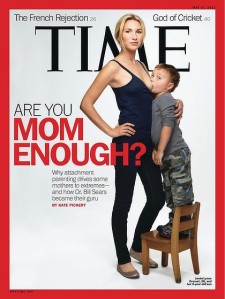This is an excerpt from the pre-print version of a chapter I have written on the topic of ‘digital bodies’. The full pre-print can be accessed here.
The sociomaterialist perspective has been taken up by several scholars writing about children’s bodies, particularly within cultural geography, but also by some sociologists and anthropologists (Prout, 1996; Horton and Kraftl, 2006a, 2006b; Lee, 2008; Woodyer, 2008). Researchers using a sociomaterialist approach have conducted studies on, for example, children’s use of asthma medication (Prout, 1996), the surveillant technologies that have developed around controlling children’s body weight in schools (Rich et al., 2011), children’s sleep and the objects with which they interact (Lee, 2008), the interrelationship of objects with pedagogy and classroom management of students’ bodies (Mulcahy, 2012) and sociomaterial practices in classrooms that lead to the inclusion or exclusion of children with disabilities (Söderström, 2014). Outside sociomaterialist studies, young children’s interactions with digital technologies have attracted extensive attention from social researchers, particularly in relation to topics such as the potential for cyber-bullying, online paedophilia and for children to become unfit and overweight due to spending too much time in front of screens (Holloway et al., 2013). However few researchers thus far have directed their attention to the types of digital technologies that visually represent children’s bodies or render their body functions, activities and behaviours into digital data; or, in other words, how children’s bodies become digital data assemblages.
From the embryonic stage of development onwards, children’s bodies are now routinely monitored and portrayed using digital technologies. A plethora of websites provide images of every stage of embryonic and foetal development, from fertilisation to birth, using a combination of digital images taken from embryo and foetus specimens and digital imaging software (Lupton, 2013). 3/4D ultrasounds have become commodified, used for ‘social’ or ‘bonding’ purposes. Many companies offering 3/D ultrasounds now come to people’s homes, allowing expectant parents to invite family and friends and turn a viewing of the foetus into a party event. This sometimes involves a ‘gender reveal’ moment, in which the sonographer demonstrates to all participants, including the parents, the sex of the foetus . Some companies offer the service of using 3D ultrasound scan files to create life-sized printed foetus replica models for parents.
The posting to social media sites such as Facebook, Twitter, Instagram and YouTube of the foetus ultrasound image has become a rite of passage for many new parents and often a way of announcing the pregnancy. Using widgets such as ‘Baby Gaga’, expectant parents can upload regular status updates to their social media feeds automatically that provide news on the foetus’s development. While a woman is pregnant, she can use a range of digital devices to monitor her foetus. Hundreds of pregnancy apps are currently on the market, including not only those that provide information but others that invite users to upload personal information about their bodies and the development of their foetus. Some apps offer a personalised foetal development overview or provide the opportunity for the woman to record the size of her pregnant abdomen week by week, eventually creating a time-lapse video. Other apps involve women tracking foetal movements or heart beat. Bella Beat, for example, is a smartphone attachment and app that allows the pregnant women to hear and record the foetal heart beat whenever she likes and to upload the audio file to her social media accounts.
YouTube has become a predominant medium for the representation of the unborn entity in the form of ultrasound images and of the moment of birth. Almost 100,000 videos showing live childbirth, including both vaginal and Caesarean births, are available for viewing on that site, allowing the entry into the world of these infants to be viewed by thousands and, in the case of some popular videos, even millions of viewers. Some women even choose to live-stream the birth so that audiences can watch the delivery in real time. Following the birth, there are similar opportunities for proud parents to share images of their infant online on social media platforms. In addition to these are the growing number of devices on the market for parents to monitor the health, development and wellbeing of their infants and young children. Apps are available to monitor such aspects as infants’ feeding and sleeping patterns, their weight and height and their development and achievements towards milestones. Sensor-embedded baby clothing, wrist or ankle bands and toys can be purchased that monitor infants’ heart rate, body temperature and breathing, producing data that are transmitted to the parents’ devices. Smartphones can be turned into baby monitors with the use of apps that record the sound levels of the infant.
As children grow, their geolocation, educational progress and physical fitness can be tracked by their parents using apps, other software and wearable devices. As children themselves begin to use digital technologies for their own purposes, they start to configure their own digital assemblages that represent and track their bodies. With the advent of touchscreen mobile devices such as smartphones and tablet computers, even very young children are now able to use social media sites and the thousands of apps that have been designed especially for their use (Holloway et al., 2013). Some such technologies encourage young children to learn about the anatomy of human bodies or about nutrition, exercise and physical fitness, calculate their body mass index, collect information about their bodies or represent their bodies in certain ways (such as manipulating photographic images of themselves). These technologies typically employ gamification strategies to provide interest and motivation for use. Some involve combining competition or games with self-tracking using wearable devices. One example is the Leapfrog Leapband, a digital wristband connected to an app which encourages children to be physically active in return for providing them with the opportunity to care for virtual pets. Another is the Sqord interactive online platform with associated digital wristband and app. Children who sign up can make an avatar of themselves and use the wristband to track their physical activity. Users compete with other users by gaining points for moving their bodies as often and as fast as possible.
In the formal educational system there are still more opportunities for children’s bodies to be monitored measured and evaluated and rendered into digitised assemblages. Programmable ‘smart schools’ are becoming viewed as part of the ‘smart city’, an urban environment in which sensors that can watch and collect digital data on citizens are ubiquitous (Williamson, 2014). The monitoring of children’s educational progress and outcomes using software is now routinely undertaken in many schools, as are their movements around the school. In countries such as the USA and the UK, the majority of schools have CCTV cameras that track students, and many use biometric tracking technologies such as RFID chips in badges or school uniforms and fingerprints to identify children and monitor their movements and their purchases at school canteens (Taylor, 2013; Selwyn, 2014). A growing number of schools are beginning to use wearable devices, apps and other software for health and physical education lessons, such as coaching apps that record children’s sporting performances and digital heart rate monitors that track their physical exertions (Lupton, 2015).
We can see in the use of digital technologies to monitor and represent the bodies of children a range of forms of embodiment. Digitised data assemblages of children’s bodies are generated from before birth via a combination of devices that seek to achieve medical- or health-related or social and affective objectives. These assemblages may move between different domains: when, for example, a digitised ultrasound image that was generated for medical purposes becomes repurposed by expectant parents as a social media artefact, a way of announcing the pregnancy, establishing their foetus as new person and establishing its social relationships. Parents’ digital devices, and later those of educational institutions and those of children themselves when they begin to use digital devices, potentially become personalised repositories for a vast amount of unique digital assemblages on the individual child, from images of them to descriptions of their growth, development, mental and physical health and wellbeing, movements in space, achievements and learning outcomes. These data assemblages, containing as they do granular details about children, offer unprecedented potential to configure knowledges about individual children and also large groups of children (as represented in aggregated big data sets).
References
Holloway D, Green L and Livingstone S. (2013) Zero to Eight: Young Children and Their Internet Use. London: LSE London, EU Kids Online.
Horton J and Kraftl P. (2006a) Not just growing up, but going on: Materials, spacings, bodies, situations. Children’s Geographies 4(3): 259-276.
Horton J and Kraftl P. (2006b) What else? some more ways of thinking and doing ‘Children’s Geographies’. Children’s Geographies 4(1): 69-95.
Lee N. (2008) Awake, asleep, adult, child: An a-humanist account of persons. Body & Society 14(4): 57-74.
Lupton D. (2013) The Social Worlds of the Unborn, Houndmills: Palgrave Macmillan.
Lupton D. (2015) Data assemblages, sentient schools and digitised health and physical education (response to Gard). Sport, Education and Society 20(1): 122-132.
Mulcahy D. (2012) Affective assemblages: body matters in the pedagogic practices of contemporary school classrooms. Pedagogy, culture and society 20(1): 9-27.
Prout A. (1996) Actor-network theory, technology and medical sociology: an illustrative analysis of the metered dose inhaler. Sociology of Health and Illness 18(2): 198-219.
Rich E, Evans J and De Pian L. (2011) Children’s bodies, surveillance and the obesity crisis. In: Rich E, Monaghan LF and Aphramor L (eds) Debating Obesity: Critical Perspectives. Houndsmills: Palgrave Macmillan, 139-163.
Selwyn N. (2014) Data entry: towards the critical study of digital data and education. Learning, Media and Technology: 1-19.
Söderström S. (2014) Socio-material practices in classrooms that lead to the social participation or social isolation of disabled pupils. Scandinavian Journal of Disability Research online first.
Taylor E. (2013) Surveillance Schools: Security, Discipline and Control in Contemporary Education, Houndmills: Palgrave Macmillan.
Williamson B. (2014) Smart schools in sentient cities. dmlcentral.
Woodyer T. (2008) The body as research tool: embodied practice and children’s geographies. Children’s Geographies 6(4): 349-362.





